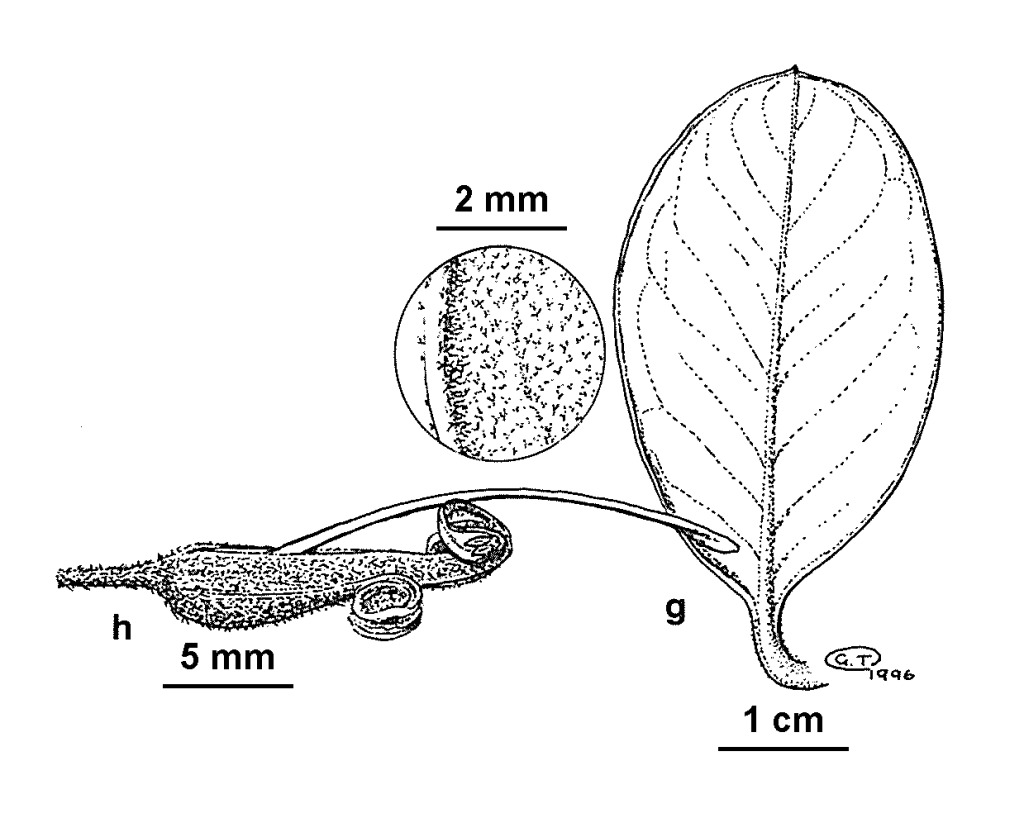Grevillea miqueliana subsp. moroka
Molyneux & Stajsic Moroka GrevilleaSpreading to erect compact shrub (0.5–)1.5–2.0 m high, 1–2.5 wide. Branchlets densely subvillous of biramous non-glandular hairs, epidermis not visible, with a lower layer of predominantly ascending hairs, with some appressed hairs, with an overlayer of predominantly erect and suberect Y-shaped hairs. Internodes usually distant. Leaves elliptic to obovate to occasionally ovate, (9–)20-35(–50) mm long, (5–)8–16(–25) mm wide; upper surface usually strongly granulose, and or with scattered biramous non-glandular hairs in younger leaves, dull; margins shortly revolute; lower surface loosely villous of biramous non-glandular hairs, epidermis clearly visible, lateral veins prominent, reticulum absent or occasionally evident; leaves usually leathery-textured. Conflorescences simple to 2-branched, simple 90 %, once-branched 7.5 %, twice-branched 2.5 %. Primary peduncles (0–)5(–17) mm long, indumentum densely subvillous; floral rachises (5–)12–20(–25) mm long. Flowering has been recorded primarily Aug.-Jan, with a second flush in Mar.-Apr., but in the absence of snow can occur sporadically throughout the year.
HSF, VAlp. Endemic to the alpine region of Victoria, occuring at altitudes between 1400 and 1500 metres above sea level. It occurs in The Razorback, The Pinnacles, Neilson Crag and the Moroka River regions. It often grows in high-altitude dry open woodland, usually on rocky sites on ridges and slopes, on stony loam soils.
 Spinning
SpinningStajsic, V.; Molyneux, W.M. (2006). Taxonomic studies in the Grevillea victoriae F.Muell. species complex (Proteaceae: Grevilleoideae) I. Descriptions of nine previously segregated, and three new taxa.. Muelleria 22: 22–76.

